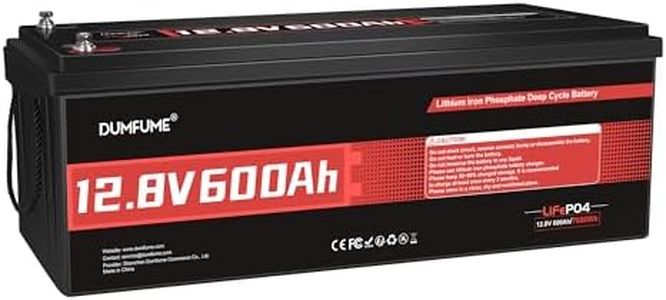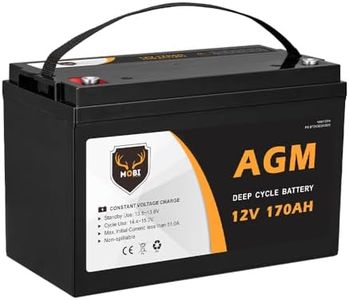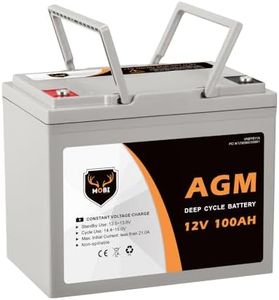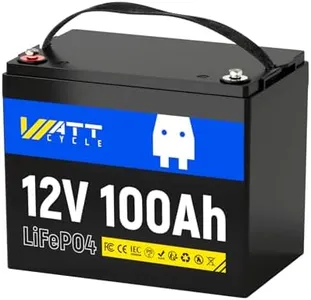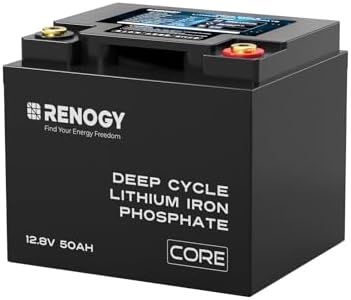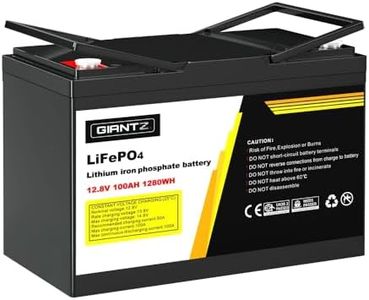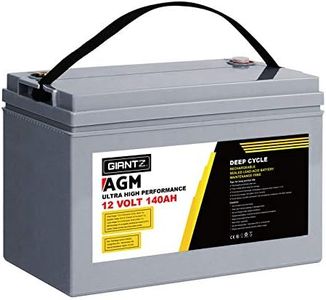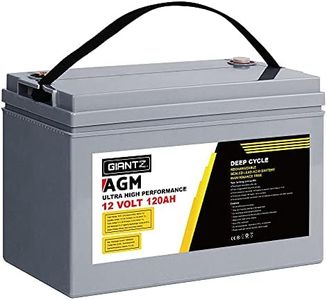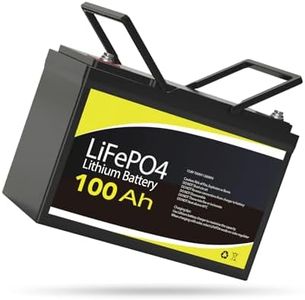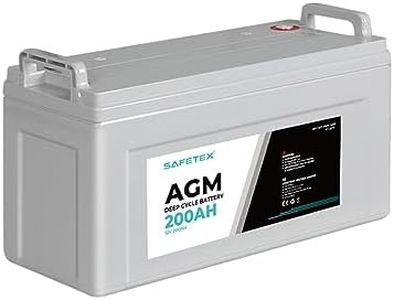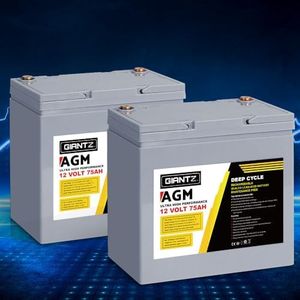We Use CookiesWe use cookies to enhance the security, performance,
functionality and for analytical and promotional activities. By continuing to browse this site you
are agreeing to our privacy policy
10 Best 12 V Deep Cycle Batteries
From leading brands and best sellers available on the web.Buying Guide for the Best 12 V Deep Cycle Batteries
Choosing a 12V deep cycle battery can seem overwhelming, but with a clear understanding of your needs and the key battery specifications, you can make a choice that delivers reliability and longevity. Deep cycle batteries are designed to provide steady power over a long period, and they are commonly used for applications like RVs, solar power systems, marine use, and electric vehicles. Before making a selection, consider how much energy you’ll need, how frequently you’ll use the battery, and the conditions in which it will operate.Battery Capacity (Amp Hours - Ah)Battery capacity tells you how much energy the battery can store and is measured in amp hours (Ah). It’s important because it affects how long the battery can power your devices before needing a recharge. Batteries come in a range of capacities, usually from 35Ah for smaller needs to 200Ah or more for bigger setups. If you need to power small electronics for a short period, a battery on the lower end of the scale may be enough. For running larger appliances or for use over several days, a higher capacity is better. Estimate your total energy usage to decide the right capacity for your needs.
Battery Type (Flooded, AGM, Gel, Lithium)Deep cycle batteries come in various types, including flooded lead-acid, AGM (Absorbed Glass Mat), Gel, and Lithium. This determines how the battery performs, how much maintenance it needs, and its lifespan. Flooded batteries are cost-effective but require regular maintenance and ventilation. AGM and Gel batteries are sealed, maintenance-free, and handle vibration better, making them suitable for mobile or marine use. Lithium batteries have a longer lifespan, lighter weight, and fast charging, but are typically more expensive. Your maintenance tolerance, installation space, and desire for ease of use will guide this choice.
Cycle LifeCycle life refers to how many full charge and discharge cycles a battery can provide before its capacity drops significantly. This is important because a battery with a higher cycle life can last more years if used regularly. Cycle counts can range from a few hundred to several thousand, with lithium batteries usually offering the highest numbers. If you plan to use the battery daily or in an off-grid power system, a higher cycle life offers better long-term value.
Discharge Depth (Depth of Discharge - DoD)Depth of Discharge or DoD tells you how much of the battery’s capacity can be safely used. Some batteries allow deeper discharges without harm, while others last longer if only partially discharged before recharging. For example, flooded and AGM batteries perform best when only 50% of their capacity is regularly used, while lithium types can often handle 80–90% DoD. Choose a battery with a DoD rating that matches how deeply you need to use your battery while maintaining good lifespan.
Physical Size and WeightThe physical size and weight of a battery matter for fitting your installation space and handling during setup or movement. Batteries come in a range of sizes and weights based on their chemistry and capacity. Measure your space and check weight limits, especially for applications like RVs or boats where size and weight can affect performance and safety. Make sure to pick a battery that fits comfortably and is practical for your available space and mobility needs.
Charging RequirementsEach battery type has specific charging requirements regarding voltage and current levels. This is important because using the wrong charger can shorten the battery’s life or cause damage. Lithium batteries in particular need chargers that meet their voltage and protection needs. Check what charging equipment you already have or are willing to buy, and make sure it matches the battery’s needs. This ensures safe operation and maximizes battery lifespan.
Operating Temperature RangeBatteries are affected by temperature—both extreme cold and heat can impact performance and lifespan. Some types, like AGM and lithium, handle temperature changes better than others. If your battery will be used outdoors, in a poorly insulated location, or in a hot or cold climate, check the manufacturer’s recommended temperature range. Choose a battery that remains reliable under the conditions it will see most often.
